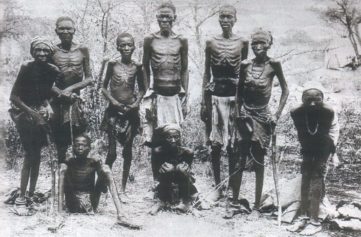IGNORING the furious winds buffeting the global aviation industry, 66-year-old Ethiopian Airlines is investing more than $2,6bn to ensure it capitalizes on its location and the ever-increasing interest in Africa from emerging-market giants such as China, India and Brazil.
Ethiopian will be the first African carrier to bring the new-generation Boeing 787 Dreamliner into service in August.
The Dreamliner will be used on the Addis Ababa-Johannesburg route daily, while at night it will travel between Addis and Guangzhou, China’s third-largest city, CEO Tewolde Gebremariam said in an interview in Debre-Zeit, Ethiopia, last week.
Ethiopian’s circumstances could not be more different from those of South African Airways (SAA), which is expected to report a net loss for the financial year to March 31.
SAA, which falls under the Department of Public Enterprises, reported a shaky profit of R782m for the 2011 financial year. A close look at the year-on-year comparison of its income statement shows this is largely due to currency conversion gains. In February, SAA chairwoman Cheryl Carolus told Parliament the airline would need an injection from the government of as much as R6bn.
Ms Carolus argued the money was not another bail-out, which has become a recurring theme at the carrier. The request for between R4bn and R6bn is the latest in a string of handouts for which the airline has approached the state. In 2009 it received an injection of R1,6bn after asking for R5,2bn from the Treasury.
Two years before that, SAA received R1,3bn. SAA famously lost R6bn on fuel hedges in 2003. The government was later required to provide it with R7bn in guarantees and its former parent company, Transnet, gave it a cash injection of R6,1bn to keep the airline solvent.
The department has argued SAA has never been adequately capitalized to the extent that it is able to compete commercially.
While Ethiopian has an advantage over SAA because of its position on the Horn of Africa, it faces the same problems of high oil prices, the continued dominance of Gulf carriers such as Emirates and Etihad, and depressed economic conditions.
SA is a long-haul destination, which counts against it due to the amount of fuel it must burn.
Ethiopian, by contrast, is building on its location, where traffic between Asia, Africa and Brazil intersects. New destinations are being introduced to maximize the benefit of the hub service it operates out of Addis Ababa. It will start its service to São Paulo in December.
“If you draw a line between India, Brazil and Africa, we are in the middle. We have to take advantage of that and grow our market in order to survive,” Mr Gebremariam said.
The government has been clear that the airline will not get any government money and has to run as a commercial concern. To meet its vision of “fast, profitable and sustainable growth”, Mr Gebremariam said Ethiopian had a “heavy order book”.
Over the next three to five years it plans to take delivery of 10 Dreamliners, with the first set for August and four more next year. The “ticket price” of each Dreamliner is $100m. Funding is coming from internal sources and “partly from the banks”, Mr Gebremariam said.
The International Air Transport Association, which represents the bulk of the world’s airline industry, forecast in March that African airlines would post a cumulative $100m loss this year. Globally, the industry is expected to have a net profit margin of 0,6% as a result of the higher fuel prices and depressed demand.
Ethiopian is also buying six Boeing 777 freight carriers, 10 737-800s, five Bombardier Q400s and has 12 Airbus A350 wide-body, long-range carriers on order. Delivery of these will start in 2017.
“We have to run like a private enterprise. Our growth must be fast to capture the opportunity of the new markets, but it must also be profitable and sustainable so that we can pay the banks,” Mr Gebremariam said.


